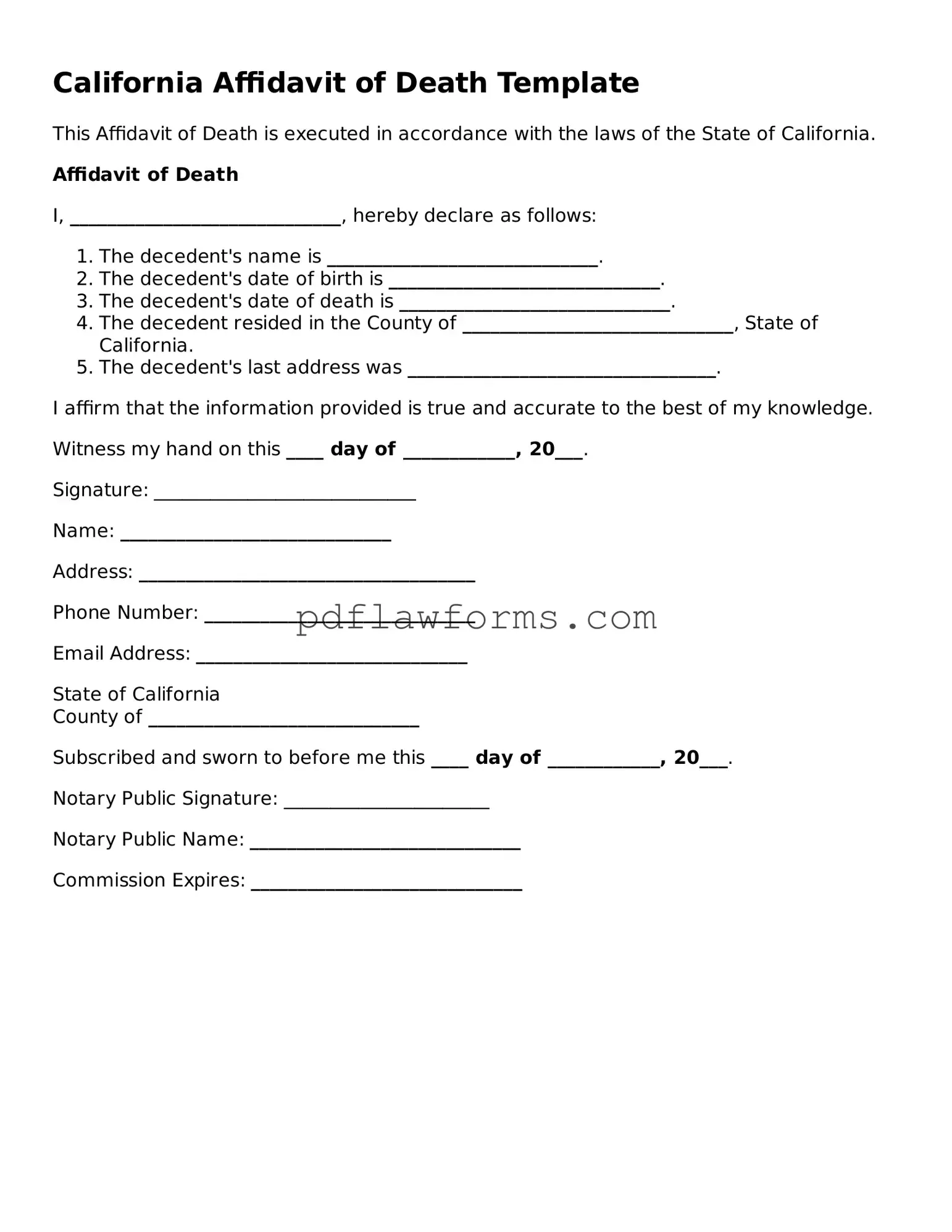Filling out the California Affidavit of Death form can be a straightforward process, but mistakes often occur. One common error is failing to provide complete and accurate information about the deceased. It is crucial to include the full name, date of birth, and date of death. Omitting any of these details can lead to delays in processing.
Another frequent mistake is not having the form properly notarized. The affidavit must be signed in front of a notary public to be considered valid. Without this step, the document may be rejected, causing additional complications for the heirs or beneficiaries.
People sometimes overlook the requirement for witness signatures. Depending on the specific situation, the form may need to be signed by one or more witnesses. Failing to include these signatures can render the affidavit incomplete.
Inaccurate information regarding the relationship to the deceased is another area where errors can occur. The form requires the affiant to clearly state their relationship. Misrepresenting this information can lead to legal challenges down the line.
Many individuals also neglect to check for consistency in the information provided. For example, the name on the affidavit must match the name on the death certificate. Discrepancies can raise questions and complicate the process.
Additionally, some people forget to date the affidavit. A missing date can create confusion about when the document was executed, which may impact its validity.
Another mistake involves not retaining copies of the completed affidavit. Keeping a copy is essential for personal records and may be necessary for future legal or administrative purposes.
Individuals sometimes rush through the form, leading to typographical errors. Simple mistakes, such as misspellings or incorrect dates, can have significant repercussions. Taking the time to review the form before submission is vital.
Lastly, people often fail to understand the implications of the affidavit. This document serves as a legal declaration of death, and its accuracy is paramount. Being informed about its purpose and requirements can prevent many of these common mistakes.
